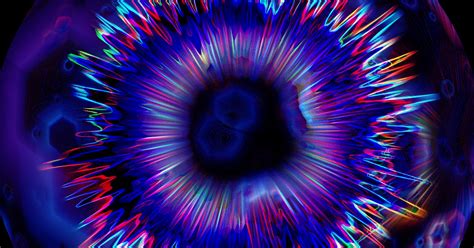
Scientists are edging closer to potentially discovering a fifth fundamental force of nature, a breakthrough that could revolutionize our understanding of the universe and its building blocks. This quest centers on the anomalous behavior of subatomic particles called muons, tiny particles similar to electrons but significantly heavier. Recent experiments and theoretical advancements suggest that these muons are not behaving as predicted by the Standard Model of particle physics, the prevailing theory describing the known fundamental forces and particles. This deviation may point to the existence of a previously unknown force carrier, potentially mediated by new particles that interact with muons, thus hinting at the existence of a fifth force. If confirmed, this discovery would reshape physics, lead to new technologies, and provide insights into some of the universe’s greatest mysteries, such as dark matter and dark energy.
The Standard Model of particle physics has been the cornerstone of our understanding of the universe’s fundamental forces – electromagnetism, the weak nuclear force, the strong nuclear force, and gravity – and the elementary particles that make up all matter. However, the Standard Model is incomplete, failing to explain phenomena such as dark matter, dark energy, neutrino masses, and the imbalance of matter and antimatter in the universe. The observed discrepancies in muon behavior could represent the first tangible evidence of physics beyond the Standard Model, potentially filling some of these critical gaps in our understanding.
The primary focus of the research revolves around the muon’s magnetic dipole moment, often referred to as the muon’s “g-2” (g minus two). This property describes how a muon interacts with a magnetic field. According to the Standard Model, the muon’s g-2 value can be predicted with extreme precision. Any significant deviation from this prediction would indicate that the muon is interacting with particles or forces not accounted for in the Standard Model.
The Muon g-2 experiment at Fermilab (Fermi National Accelerator Laboratory) has been at the forefront of this investigation. This experiment replicates and improves upon an earlier experiment conducted at Brookhaven National Laboratory in the late 1990s and early 2000s, which initially suggested a discrepancy between the experimental value of the muon’s g-2 and the Standard Model prediction. Fermilab’s more precise measurements have reinforced this anomaly, providing stronger evidence for the existence of new physics.
The experimental setup at Fermilab involves circulating muons in a powerful magnetic field and precisely measuring their precession rate. The precession rate is directly related to the muon’s g-2 value. By comparing the experimental result with the Standard Model prediction, physicists can search for deviations that might indicate the presence of new particles or forces.
“If this is confirmed, it would be revolutionary, it would change our understanding of the universe,” Dr. Mitesh Patel, a physicist at Imperial College London, told Yahoo News. Patel is one of many researchers around the world contributing to the theoretical and experimental efforts to understand the muon’s anomalous behavior.
The challenge lies in the complexity of the Standard Model calculations. Predicting the muon’s g-2 value requires accounting for all possible interactions between the muon and other particles within the Standard Model, including virtual particles that pop in and out of existence according to quantum mechanics. These calculations are extremely computationally intensive and require sophisticated theoretical techniques.
The latest results from Fermilab, combined with improved theoretical calculations, have strengthened the case for new physics. While the discrepancy between the experimental value and the Standard Model prediction is not yet statistically significant enough to be declared a definitive discovery (typically requiring a “5-sigma” level of certainty), the current evidence is compelling and warrants further investigation. The combined experimental results from Fermilab and Brookhaven, along with refined theoretical calculations, point to a statistically significant deviation from the Standard Model.
Several theoretical models have been proposed to explain the muon g-2 anomaly. These models typically involve the introduction of new particles that interact with muons but not with other particles, such as electrons. One possibility is the existence of a new force-carrying particle, often referred to as a “Z’ boson” or a “dark photon,” that mediates a fifth force. Another possibility is the existence of supersymmetric particles, which are predicted by supersymmetry, a theoretical framework that extends the Standard Model. Supersymmetry postulates that every known particle has a heavier partner particle.
The discovery of a fifth force would have profound implications for our understanding of the universe. It could help explain some of the outstanding mysteries of cosmology, such as the nature of dark matter and dark energy. Dark matter is a mysterious substance that makes up about 85% of the matter in the universe, but it does not interact with light, making it invisible to telescopes. Dark energy is an even more mysterious force that is causing the universe to expand at an accelerating rate. The new particles associated with a fifth force could potentially interact with dark matter particles, providing a way to detect and study dark matter.
Furthermore, a fifth force could lead to new technologies and applications. For example, it could be used to develop new types of sensors, detectors, and communication devices. It could also be used to probe the structure of matter at the smallest scales, leading to a deeper understanding of the fundamental laws of physics.
The search for a fifth force is an ongoing endeavor involving researchers from around the world. In addition to the Muon g-2 experiment at Fermilab, other experiments are also searching for new particles and forces. These include the Large Hadron Collider (LHC) at CERN (European Organization for Nuclear Research) and various other experiments that are searching for dark matter particles.
The potential discovery of a fifth force highlights the importance of continued research in fundamental physics. It demonstrates that the Standard Model, while successful in many respects, is not the final word on the nature of the universe. There are still many mysteries to be solved, and new discoveries are waiting to be made.
The ongoing analysis of the data from the Muon g-2 experiment and the development of new theoretical models are crucial steps in this quest. The collaboration between experimentalists and theorists is essential for making progress in this field. As Dr. Patel emphasized, “This is a very exciting time for particle physics. We are on the cusp of potentially discovering something truly revolutionary.” The pursuit of this fifth force not only promises to reshape our understanding of the cosmos but also to unlock new technological possibilities, illustrating the powerful interplay between fundamental research and societal advancement.
The quest to validate a fifth force also emphasizes the scientific community’s commitment to rigour and thorough investigation. The existing discrepancy, while tantalizing, must meet stringent statistical thresholds to be considered a genuine discovery. Scientists must carefully consider all potential sources of error and refine their theoretical models to ensure the accuracy of their predictions. This meticulous process underscores the scientific method’s emphasis on evidence-based conclusions and the ongoing effort to refine our understanding of the universe’s fundamental principles. The discovery of a fifth force, if validated, will not only represent a monumental achievement in physics but also a testament to the scientific community’s relentless pursuit of knowledge.
Detailed Expansion and Background Information
The Standard Model, while exceptionally successful, has known limitations. It does not incorporate gravity, it struggles to explain dark matter and dark energy, and it doesn’t fully address the observed neutrino masses or the matter-antimatter asymmetry. The search for physics beyond the Standard Model is driven by these shortcomings. The g-2 anomaly in muon behavior offers a potential window into this new physics.
The Muon g-2 Experiment:
The Muon g-2 experiment is designed to measure the anomalous magnetic dipole moment of the muon with unprecedented precision. The experiment works by circulating muons in a uniform magnetic field. Because the muon has an intrinsic angular momentum (spin) and is electrically charged, it precesses in the magnetic field, much like a spinning top wobbles in Earth’s gravitational field. The rate of precession is directly proportional to the muon’s magnetic moment.
The key is that the muon’s magnetic moment isn’t exactly what the Dirac equation (a fundamental equation in quantum mechanics) predicts. It’s slightly larger, hence the term “anomalous magnetic dipole moment.” This anomaly arises because the muon interacts with virtual particles – particles that briefly pop into existence and then disappear – that surround it. These virtual particles include photons, electrons, and even heavier particles like W and Z bosons. The Standard Model predicts the contribution of all these virtual particles to the muon’s anomalous magnetic moment.
The experiment at Fermilab is a significant improvement over the earlier experiment at Brookhaven. The Fermilab experiment benefits from a higher-intensity muon beam and a more uniform magnetic field, allowing for more precise measurements. The experimental apparatus itself is a marvel of engineering. It consists of a 15-meter diameter superconducting storage ring that generates a highly uniform magnetic field. Muons are injected into the ring and circulated for hundreds of orbits. Detectors around the ring measure the decay products of the muons, allowing physicists to determine the muon’s precession rate.
Theoretical Challenges and Calculations:
Calculating the Standard Model prediction for the muon’s anomalous magnetic moment is an incredibly complex task. It requires accounting for all possible interactions between the muon and the virtual particles that surround it. These calculations involve sophisticated techniques from quantum field theory, including perturbative calculations and lattice QCD (quantum chromodynamics) simulations.
One of the biggest challenges in these calculations is the contribution from hadronic vacuum polarization. Hadrons are particles made up of quarks and gluons, such as protons and neutrons. The hadronic vacuum polarization contribution arises from virtual hadrons that fluctuate in the vacuum. These contributions are difficult to calculate because the strong force, which governs the interactions of quarks and gluons, is very strong at low energies, making perturbative calculations unreliable.
Scientists use lattice QCD simulations to calculate the hadronic vacuum polarization contribution. Lattice QCD is a numerical technique that involves discretizing space-time into a lattice and then solving the equations of QCD on the lattice. These simulations are computationally intensive and require the use of supercomputers. Different research groups use different methodologies and thus arriving at slightly different predictions.
Potential Implications and Future Research:
If the discrepancy between the experimental value of the muon’s g-2 and the Standard Model prediction is confirmed, it would have profound implications for our understanding of the universe. It would suggest that there are new particles or forces that are not accounted for in the Standard Model.
The discovery of a fifth force could help explain some of the outstanding mysteries of cosmology, such as the nature of dark matter and dark energy. Dark matter is a mysterious substance that makes up about 85% of the matter in the universe, but it does not interact with light, making it invisible to telescopes. Dark energy is an even more mysterious force that is causing the universe to expand at an accelerating rate. The new particles associated with a fifth force could potentially interact with dark matter particles, providing a way to detect and study dark matter. It could also influence the properties of dark energy, potentially shedding light on its nature.
The potential for a fifth force goes beyond cosmology; it has significant theoretical implications within fundamental physics. It could challenge current theories of unification, which aim to combine the Standard Model forces into a single framework. If a fifth force exists, it must be integrated into these unification schemes, potentially leading to a new understanding of the universe’s fundamental building blocks.
Specific Theoretical Models:
Several theoretical models have been proposed to explain the muon g-2 anomaly. These models typically involve the introduction of new particles that interact with muons but not with other particles, such as electrons. Some of the most popular models include:
- Z’ Boson: This is a hypothetical massive neutral particle that mediates a new force between muons. The Z’ boson would interact with muons but not with other particles, such as electrons, which would explain why the muon’s g-2 is anomalous but the electron’s g-2 is not.
- Supersymmetry (SUSY): This is a theoretical framework that postulates that every known particle has a heavier partner particle. The supersymmetric partners of the Standard Model particles could interact with muons and contribute to the muon’s g-2. SUSY models have been invoked to address multiple problems within the Standard Model beyond the g-2 anomaly, making its existence a high-priority target for particle physics research.
- Leptoquarks: These are hypothetical particles that mediate interactions between leptons (such as muons and electrons) and quarks (the building blocks of protons and neutrons). Leptoquarks could interact with muons and contribute to the muon’s g-2.
Experimental Verification and Future Experiments:
The search for new particles associated with a fifth force is an ongoing endeavor involving researchers from around the world. In addition to the Muon g-2 experiment at Fermilab, other experiments are also searching for new particles and forces. These include:
- The Large Hadron Collider (LHC) at CERN: The LHC is the world’s largest and most powerful particle accelerator. It collides protons at very high energies, allowing physicists to search for new particles that are too heavy to be produced in other experiments. The LHC could potentially discover new particles associated with a fifth force, such as a Z’ boson or supersymmetric particles.
- Belle II experiment at the KEK laboratory in Japan: Belle II is a high-luminosity electron-positron collider that is designed to study the decays of B mesons and other heavy particles. Belle II could potentially discover new particles associated with a fifth force by studying their effects on the decays of B mesons.
- Dark matter direct detection experiments: These experiments are designed to directly detect dark matter particles as they interact with ordinary matter. If the new particles associated with a fifth force interact with dark matter particles, these experiments could potentially detect them. XENONnT, LUX-ZEPLIN (LZ), and PandaX-4T are some examples.
Statistical Significance and Future Data:
The current discrepancy between the experimental value of the muon’s g-2 and the Standard Model prediction is not yet statistically significant enough to be declared a definitive discovery. In particle physics, a discovery typically requires a “5-sigma” level of certainty, which corresponds to a probability of less than one in 3.5 million that the observed effect is due to chance. The current discrepancy is at the 4.2-sigma level. Fermilab continues to collect more data from the Muon g-2 experiment. As more data is collected, the statistical significance of the discrepancy will increase. It is hoped that the experiment will eventually reach the 5-sigma level, which would confirm the existence of new physics. Additionally, improved theoretical calculations are also crucial to strengthen the case for new physics.
FAQ (Frequently Asked Questions)
-
What is the Standard Model of particle physics, and why is it considered incomplete?
The Standard Model is the prevailing theory that describes the fundamental forces (electromagnetism, weak nuclear force, strong nuclear force) and elementary particles that constitute matter. It’s considered incomplete because it doesn’t explain phenomena like dark matter, dark energy, neutrino masses, gravity, and the matter-antimatter imbalance in the universe.
-
What is the muon g-2 anomaly, and why is it significant?
The muon g-2 anomaly refers to the observed discrepancy between the predicted value of the muon’s magnetic dipole moment (g-2) according to the Standard Model and the experimentally measured value. This discrepancy is significant because it suggests that the muon may be interacting with particles or forces not accounted for in the Standard Model, potentially indicating the existence of new physics.
-
How does the Muon g-2 experiment at Fermilab work, and what are its goals?
The Muon g-2 experiment at Fermilab circulates muons in a powerful magnetic field and precisely measures their precession rate. The goal is to determine the muon’s anomalous magnetic dipole moment with unprecedented precision. By comparing the experimental result with the Standard Model prediction, physicists can search for deviations that might indicate the presence of new particles or forces.
-
What are some theoretical models that could explain the muon g-2 anomaly, and what new particles do they propose?
Several theoretical models have been proposed, including:
- Z’ Boson: A hypothetical massive neutral particle that mediates a new force between muons.
- Supersymmetry (SUSY): Postulates that every known particle has a heavier partner particle, which could interact with muons and contribute to the muon’s g-2.
- Leptoquarks: Hypothetical particles that mediate interactions between leptons (such as muons and electrons) and quarks.
-
What are the potential implications of discovering a fifth force of nature, and how could it impact our understanding of the universe?
The discovery of a fifth force could have profound implications, including:
- Explaining mysteries of cosmology, such as the nature of dark matter and dark energy.
- Leading to new technologies and applications, such as new types of sensors, detectors, and communication devices.
- Challenging and potentially reshaping current theories of unification in physics. It would revolutionize our understanding of the universe and its fundamental building blocks.









